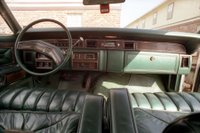Our Quest for a Dream Home - 3
These days, most buildings are built using the column-beam structure. Before thirty years ago, such construction was only used for large commercial buildings. Most residences, usually not more than one or two storeys high didn't need to put in steel reinforced columns and beams to support the structure. There wasn't enough load to handle in small residences. They used to have a construction called "load-bearing" construction, in which the ground was excavated about 6 ft, steel reinforcement was provided at the bottom of the pit and bricks were lined up to build a solid pyramid shape basement. Then soil was filled and compacted to provide stability to the above ground structure. It was time consuming but does not involve as much concrete and steel as the column-beam structures. One of the first eco-friendly decisions made was to build the old way with minimum use of steel and cement.
The foundation work took a couple of months to complete. As proposed by my father, to provide additional support only for a of wall with maximum window coverage and an open double high ceiling, only four total steel-concrete columns were raised for the entire house. While the foundation work was going on, it was time to decide on another eco-friendly material to construct the house in. We had looked through several earth block constructions on the internet at my architect sister's recommendation. We were drawn towards this concept called vernacular architecture. Wikipedia defines this as "Vernacular architecture is a category of architecture based on local needs and construction materials, and reflecting local traditions. It tends to evolve over time to reflect the environmental, cultural, technological, and historical context in which it exists. While often not thoroughly and academically planned, this kind of architecture played and still plays a major role in the history of architecture and design, especially in local branches".
 We wanted to source the items locally to minimize the carbon footprint of the materials and also to stick with a traditional architecture to reflect our culture. Tamil Nadu, the state I was born and raised in, is rich in cultural heritage. Several innovations in construction have happened here locally and only a very few of those still strive due to the rapid technological advances in the construction industry. We wanted to give these small dwindling industries an opportunity to show their potential and to encourage local builders to go local and promote local technologies even in this modern day and age. We wanted to have a design that will not only be eco-friendly but also prove that with traditional techniques we can still have the comforts and the beauty of modern days.
We wanted to source the items locally to minimize the carbon footprint of the materials and also to stick with a traditional architecture to reflect our culture. Tamil Nadu, the state I was born and raised in, is rich in cultural heritage. Several innovations in construction have happened here locally and only a very few of those still strive due to the rapid technological advances in the construction industry. We wanted to give these small dwindling industries an opportunity to show their potential and to encourage local builders to go local and promote local technologies even in this modern day and age. We wanted to have a design that will not only be eco-friendly but also prove that with traditional techniques we can still have the comforts and the beauty of modern days.I learnt about Auroville during my research. It is a small self-sufficient township within Tamil Nadu bordering the union territory of Pondicherry. Many buildings in Auroville are built with locally made bricks from red clay available in the region. The brick of Auroville is called "Compressed Stabilized Earth Block". I took a day road trip to Auroville to look at the construction and the bricks to make up my mind. The trip was worthwhile. The brick was pricey with transportation but I knew it was friendly to the environment. There is no thermal energy used to make the brick unlike oven fired clay bricks and the resultant buildings are also energy efficient compared to regular brick construction, which is typical to this region. I ensured that my contractor joined me on the trip to learn the tricks and techniques from the local masters. That trip, not only gave an insight on how we can harness nature to be eco-friendly.
To be continued...




